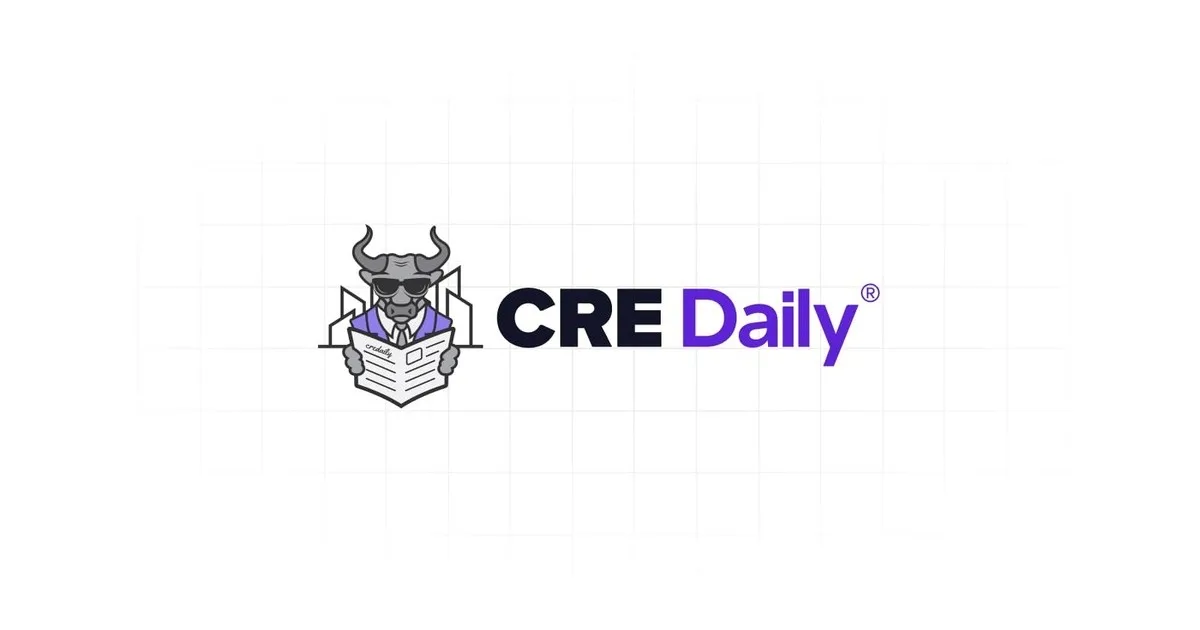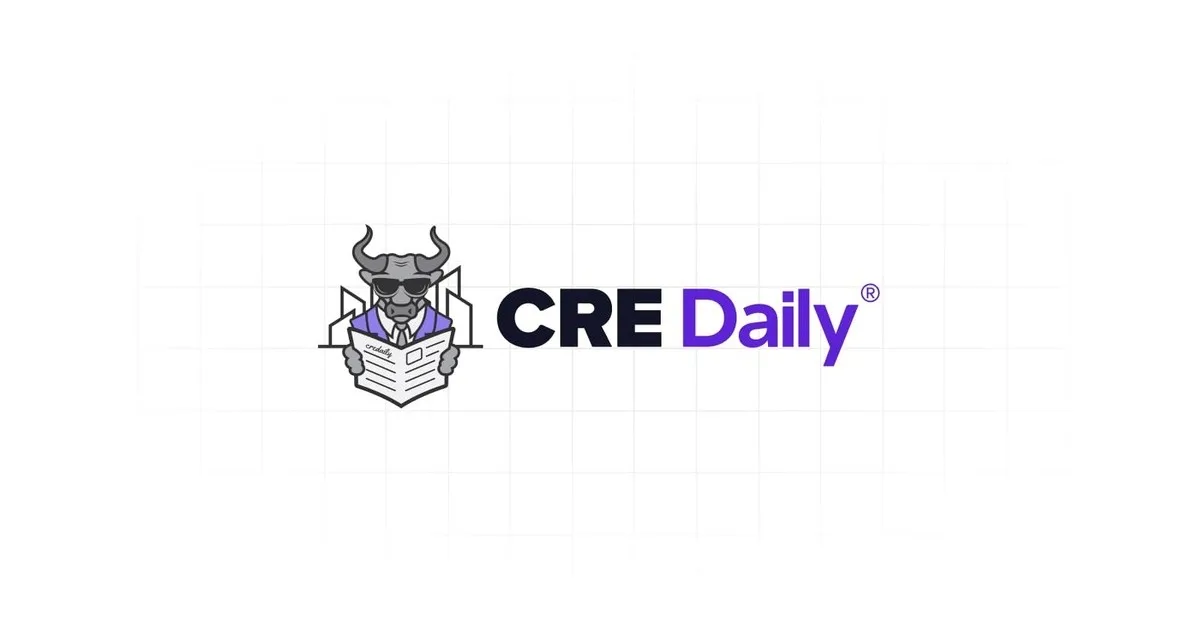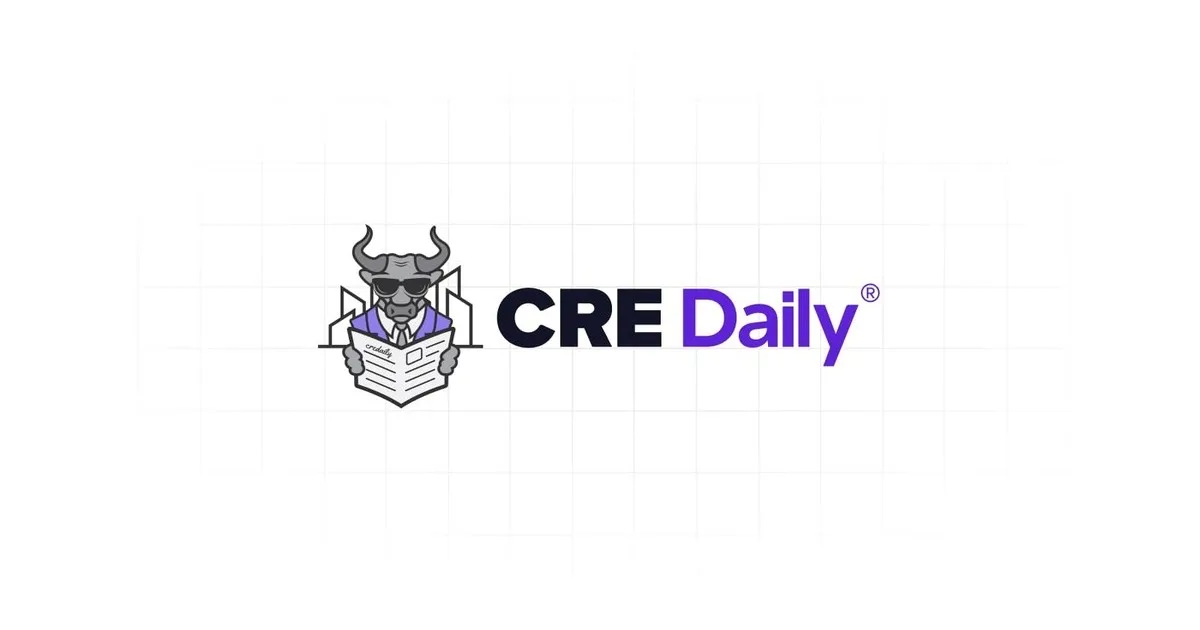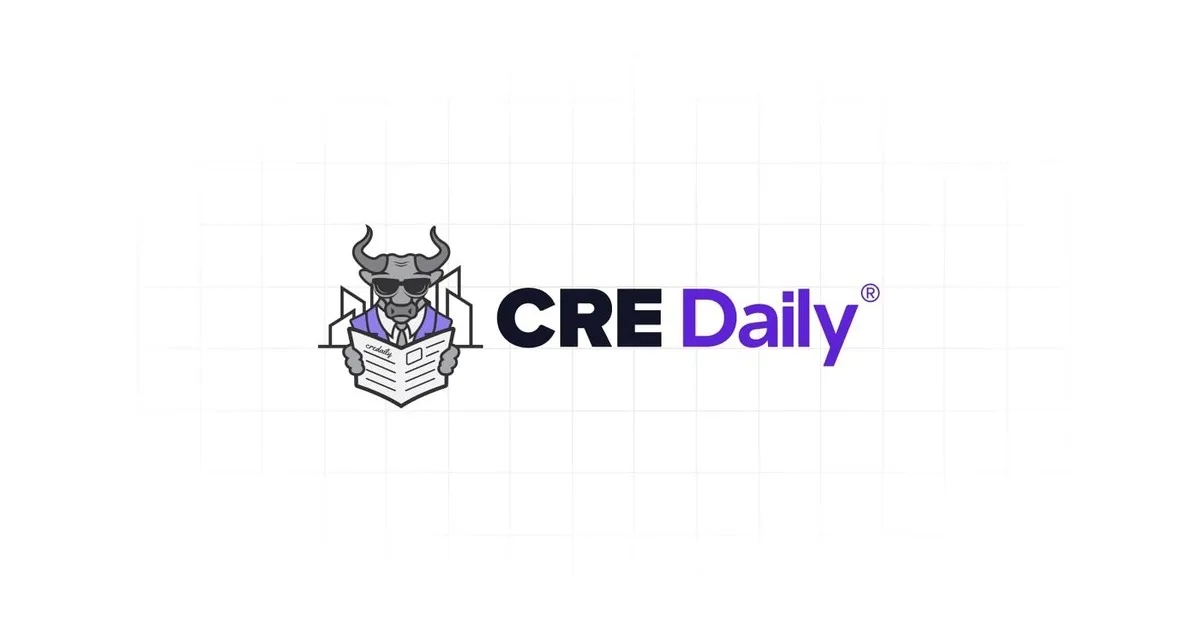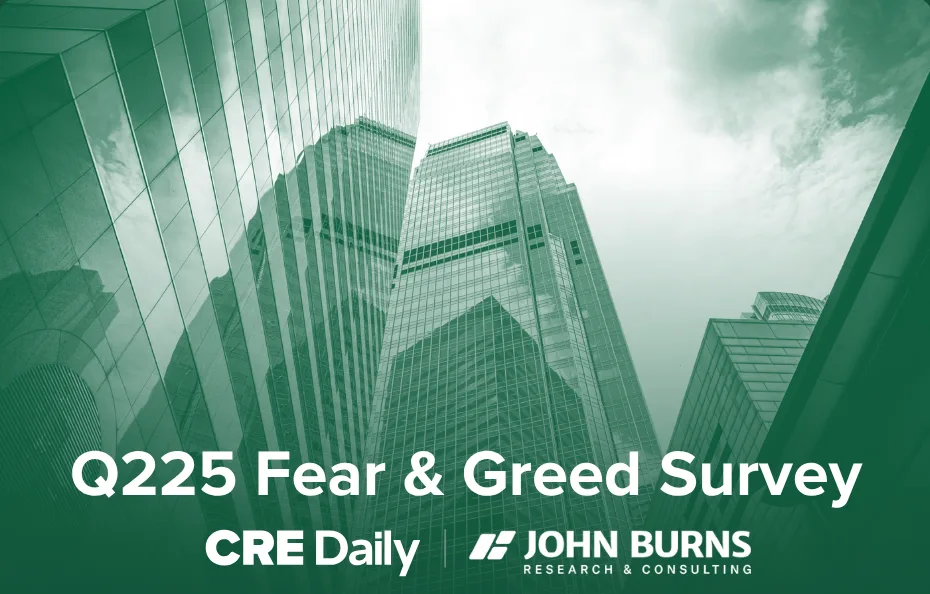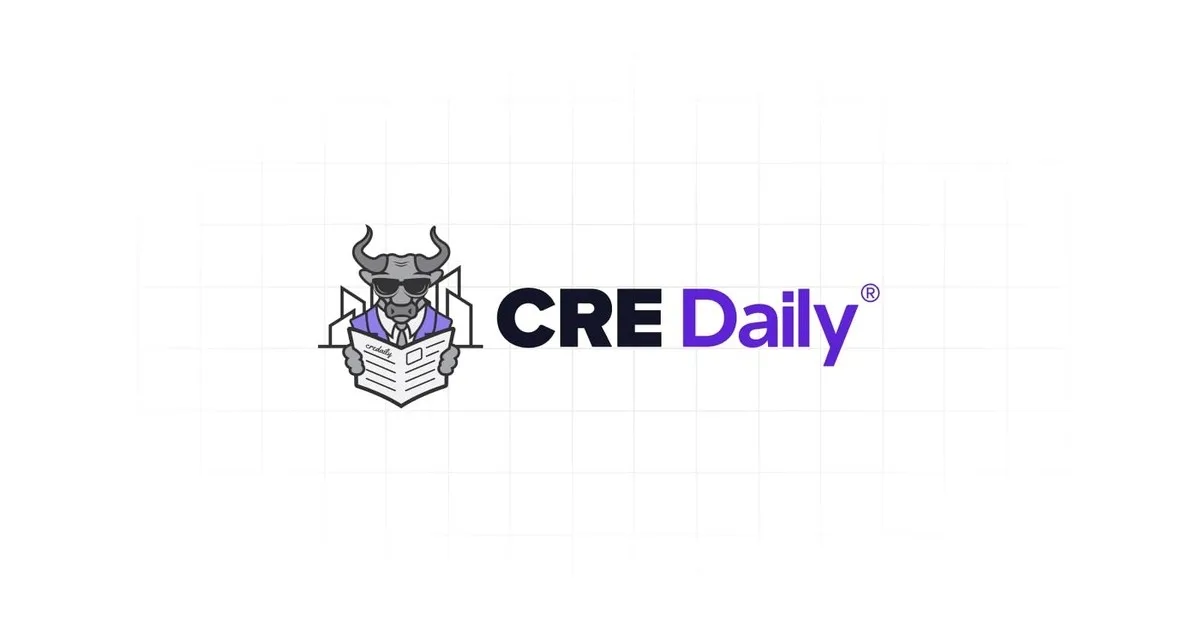- 72% of companies meet attendance goals as hybrid work expectations and behavior align.
- Attendance policies are widespread, with enforcement more than doubling since 2024.
- Peak-day usage is high, but uneven weekly attendance impacts workplace culture.
- Unassigned seating and flexible space use continue to grow in popularity.
The latest Americas Office Occupier Sentiment Survey shows employers closing the gap between desired and actual office attendance, with hybrid work firmly entrenched, reports CBRE. The 2025 study was conducted across the US, Canada, and Latin America. It reveals that most organizations have found a “steady state” for attendance. However, many still aim to boost in-office presence.
A Closer Look
Employer Expectations and Achievement Rates for Office Attendance
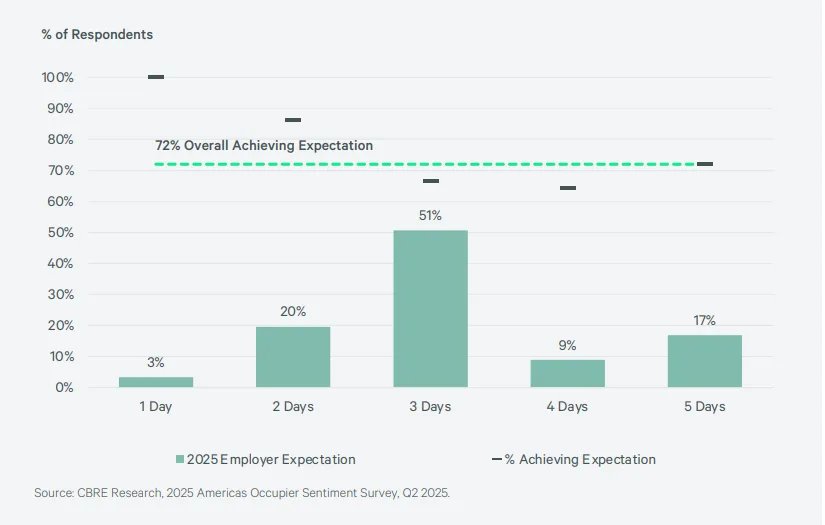
- Attendance alignment: Employers expect an average of 3.2 in-office days per week, while employees are averaging 2.9—up slightly from last year and the closest alignment yet. Large companies, however, face the biggest gap (3.1 expected vs. 2.5 actual days).
- Enforcement uptick: After years of soft policy approaches, enforcement has increased sharply. Small firms lead in policy adherence, while only 22% of large firms actively enforce attendance.
- Cultural friction: Despite high peak-day usage (73% report near capacity), only 34% report similar averages, leading to inconsistent energy levels in the workplace.
Peak vs Average Weekly Office Utilization
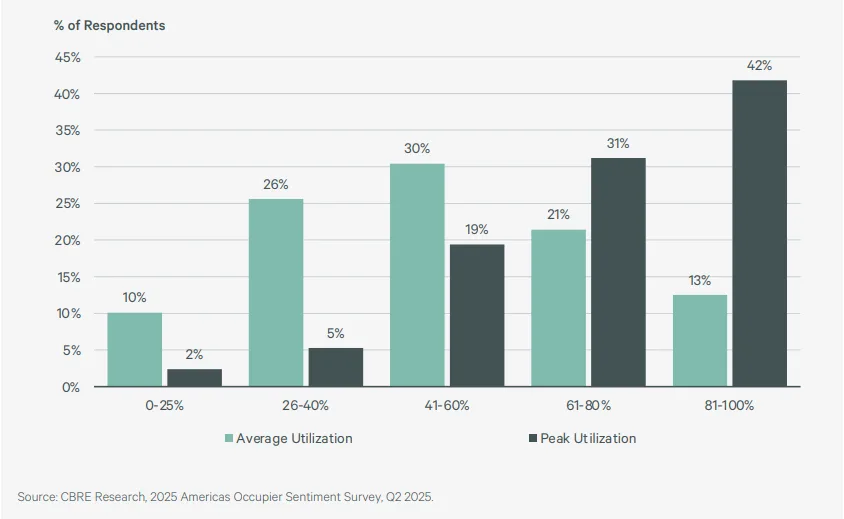
Space Strategies Evolve
Share of Employees Working in Unassigned Desk Environment
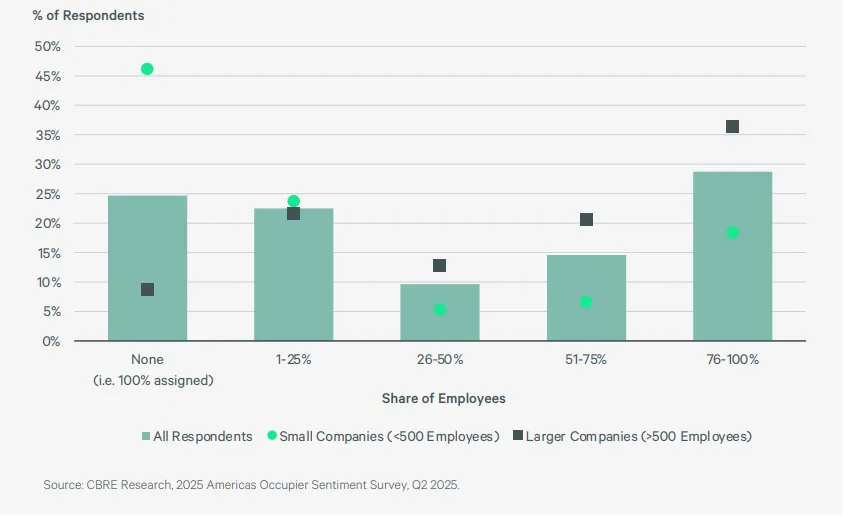
- From desks to flexibility: The shift toward unassigned seating continues, with 75% of companies using it for at least some employees.
- Flex space growth: Both small and large firms plan to modestly increase flexible office use, citing reasons from cost management to offering collaboration space on demand.
- Portfolio outlook: 67% of occupiers expect to hold or grow space over the next three years, with small companies driving most expansion.
Portfolio Size Change Expectations Over Next Three Years
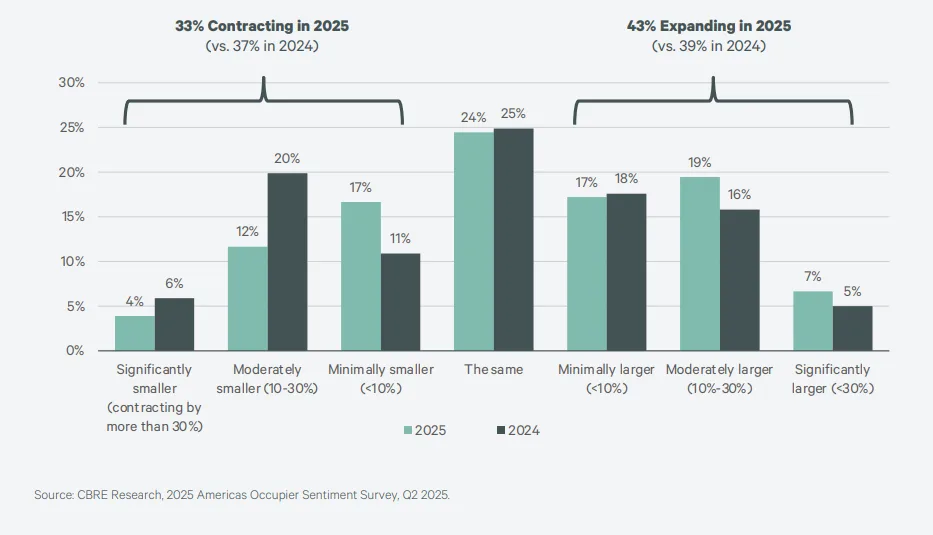
Why It Matters
The data suggests hybrid work is stabilizing but still poses operational and cultural challenges. Developers, landlords, and occupiers are pivoting toward flexibility. They are also prioritizing experience-driven amenities. In addition, they are focusing on early space planning to secure high-quality, well-connected offices in competitive markets.

